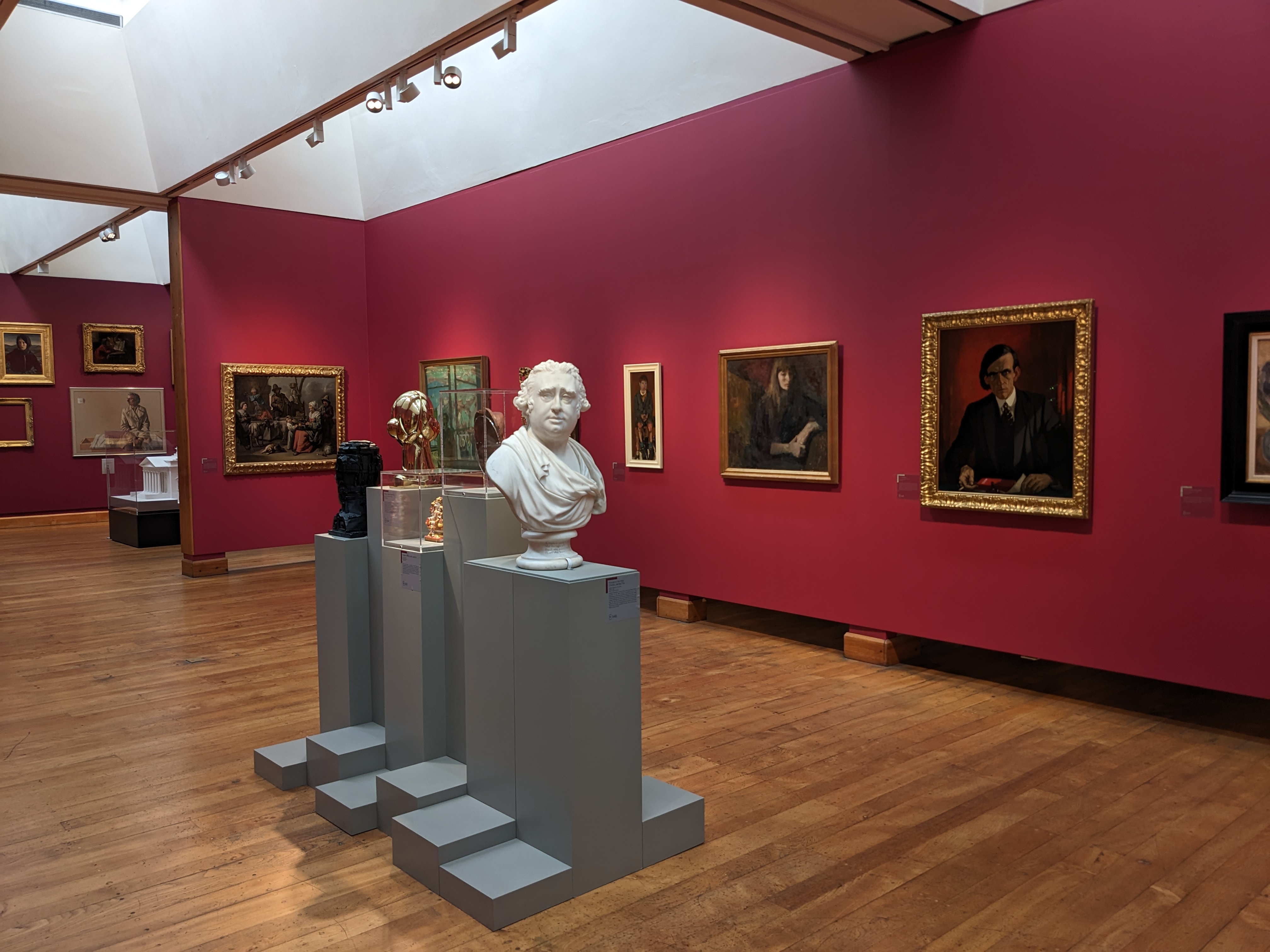The Hunterian recently added two significant 18th century white marble busts to its collection on long-term loan from private collectors. Both are on display as part of our recent reframing of our art collection.
Here, we look more closely at the significance of sculpture in the past, and how the addition of these portrait busts offers fresh opportunities to continue questioning historic practices.
Visitors can see over 200 artworks spanning seven centuries in The Hunterian’s revamped main gallery. Many of the works have never been on show before or have been hidden from view for a number of years.
To make the collections and spaces more meaningful to more people, the artworks are presented under new themes. These concepts ask questions and invite broader discussion around our collections.
In early December 2020, The Hunterian had the rare opportunity of adding two significant white marble busts into its collection as loans, and both feature in our revamped displays.
History and Memory
One is a portrait bust by Flemish sculptor, Michael Rysbrack (1694-1770) from 1733, which captures the likeness of Lord George Hamilton, 1st Earl of Orkney (1666-1737).
In the Art Gallery’s Room 4, we look at ‘History and Memory’. The objects in this room show that artists depict history and interpret the past in ways that are both controversial and far from impartial. They attest to the persistence of classical traditions, a set of styles and values based on ideas from ancient Greece and Rome influential in Europe for centuries.
Son of the Duke and Duchess of Hamilton, Lord George Hamilton was a distinguished army officer and a leading subordinate general under the Duke of Marlborough during the War of the Spanish Succession (1701–1714).

He also served as a representative peer for Scotland in the British parliament following the Act of Union and was a Lord of the Bedchamber to George I.
Rysbrack’s work features in Room 4, as it highlights the way Hamilton has been depicted by the artist as a Roman military commander, with close-cropped curly hair and a furrowed brow.
The classical format this bust adopts was the height of fashion among the political and social elites at the time. Classical values include authority and privilege, male heroism and strength, and female beauty and piety.
Turning a critical eye on these works helps us understand the values and views that have shaped the world we live in today.
Art can express many different versions of ‘what happened’ in the past, and what art ‘says’ about the past is by no means straightforward.
What Makes a Portrait?
The second of the two busts, dating from 1796, is a portrait by Joseph Nollekens (1737-1823), of the famous Whig politician, the Hon. Charles Fox (1749-1806), whose mother was a patient of Hunterian founder, Dr William Hunter.
It features in Room 3, which asks the question: ‘What makes a portrait?’
Traditionally, a portrait is the representation of a person, created in any medium, containing the face of an individual, group, or an artist’s self-portrait. But portraits do more than represent a person’s likeness.
Portraits express someone’s identity, but also how they see themselves and how they want to be seen. Historically in Western culture, portraits were commissioned by wealthy patrons who would sit for the artist.
As the product of a patron’s desires and an artist’s paid labour, portraits often convey symbols of power, wealth, importance, authority, virtue, status or beauty.

Nollekens’s sculpture is no different, and captures more than just a likeness in this bust of Fox. All of Fox’s physical characteristics, often commented upon by his contemporaries, are skilfully highlighted. There is his sheer bulk; the prominent dimple on his chin; his piercing eyes; and his famous shaggy eyebrow that led one of his friends to refer to him as ‘The Eyebrow’.
Commissioned by his best friend, the bust was meant to convey the charisma and intellectual vigour of Fox to those who would encounter it throughout the centuries.
Posing New Questions
Portrait busts, like other statues, can be problematic owing to the way they can be used to create and maintain selective and exclusionary histories.
The addition of these two loans to The Hunterian collection offers further opportunities for reflection and discussion around art and history. Displaying them as part of the reframing of our collection can encourage wider consideration on why particular works of art are made.
Much can be learned from the artistic techniques deployed, the context the artists were working in, as well as the lives of the artists’ subjects.
By examining these elements simultaneously, alongside other contemporary depictions of the same people, more fully-rounded pasts can be understood.
Read more about the portrait bust of Lord George Hamilton, by Michael Rysbrack here.
Looking from new perspectives, the revamped displays in our gallery rehang ask questions such as: ‘How do art and history influence each other?’ ‘What can one picture tell us?’ ‘What counts as art?’ ‘How are artworks made?’
Find out more about The Hunterian Art Gallery and plan your visit.
Stay up to date with all things Hunterian via our blog. We’ll have more features about the Art Gallery rehang in the coming weeks and months – as well as stories from right across our collections!


2 responses to “Reframing our collections”
[…] Hunterian recently added two significant 18th century white marble busts to its collection on long-term loan f…. Both are on display as part of our recent reframing of our art collection. Here, we look more […]
[…] Hunterian recently added two significant 18th century white marble busts to its collection. On long-term loan from private collectors, they are on display as part of the reframing of our art […]